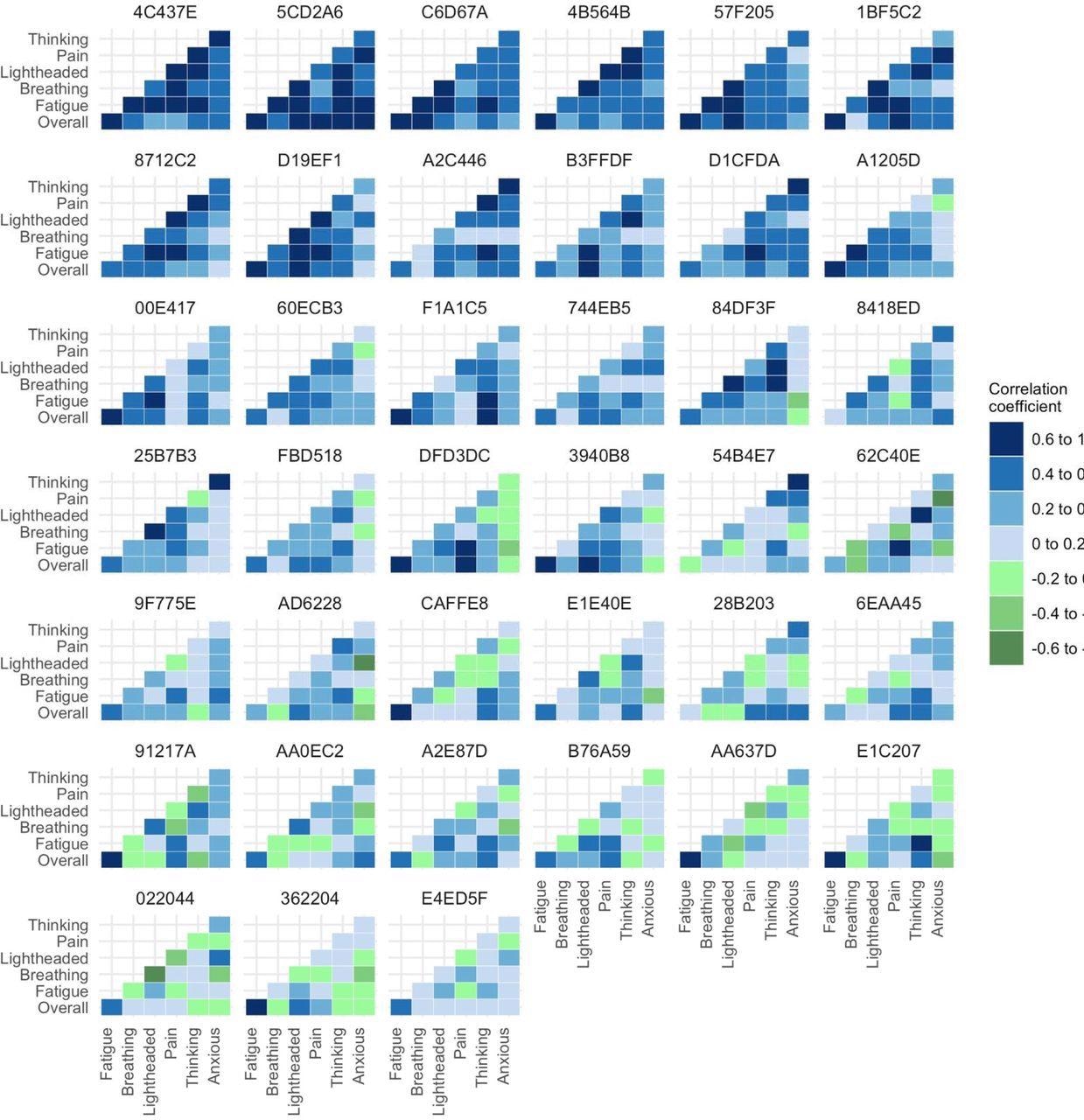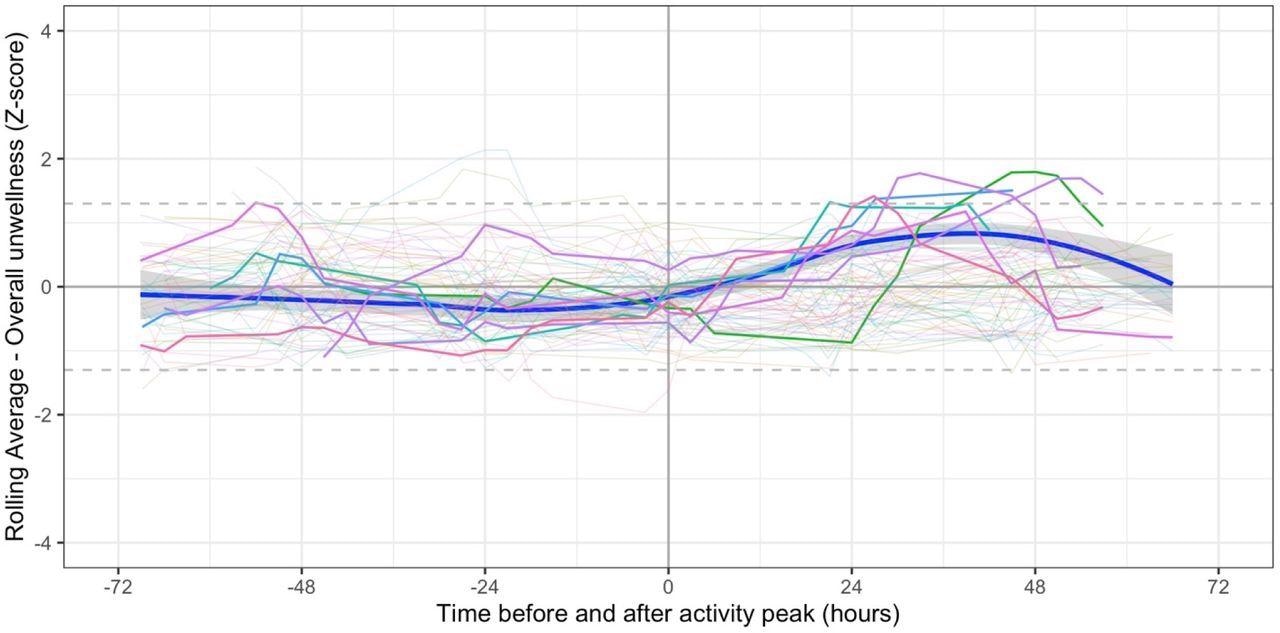Post-acute sequelae of COVID 2019 (COVID-19) (PASC), long COVID, or post-COVID syndrome is a heterogeneous condition that accompanies rapid severe acute respiratory syndrome coronavirus 2 (SARS-CoV-2) infection. Prominent symptoms of the post-COVID syndrome include cognitive dysfunction, fatigue, and breathlessness, although a large spectrum of other symptoms are also frequent and may prevail in certain patients.
Since studies have used various standards for symptoms and time stamps, the prevalence of post-COVID syndrome is currently unknown. Nevertheless, recent United Kingdom (UK) data show that 1.2 million people, or 1.9% of the population, have chronic symptoms for over 12 weeks following acute SARS-CoV-2 infection and that roughly 20% of the individuals have symptoms that significantly limit their ability to carry out day-to-day activities. Moreover, people with long COVID experience numerous symptoms which differ among and within individuals across comparatively minute time intervals.
About the study
In the present paper, the scientists tried to characterize the real-time connections between distinct PASC symptoms and physical activity and symptoms at the individual level. The team conducted an intensive long-term analysis of 82 persons who had self-documented long COVID for about 12 to 18 months.
The study's goals were to measure the within-person variance of PASC symptoms. Further, to assess the real-time relationships of various symptoms of long COVID in the milieu of daily life. Finally, to analyze the strength of the link between symptoms and self-documented demand for activities and unbiased physical activity.

Heatmap of unadjusted correlations between symptoms at the individual participant level. The figure shows only those participants who experienced all relevant symptoms at a sufficient level to be included in the correlation analysis.
The data was collected using a smartphone application with five daily entries over two weeks and the constant use of a wrist accelerometer. Data items consisted of perceived needs in the previous period in Likert scales and seven symptoms in visual analog scales. Mean acceleration was used to measure activity in the three-hour timeframe before and after application data entry. Within-person associations of symptom pairings, and individual and pooled symptom circuits produced via graphical vector autoregression, were used in the analysis.
Based on an embodied predictive interoceptive coding (EPIC) model of symptoms, the authors hypothesized that strong and constant patterns of connection between clusters of symptoms or among symptoms, effort, and activity might point to a precise interoception of pathophysiological processes affecting body organs/systems. In addition, poor or inconsistent associations might suggest that impaired interoception and symptom processing were compounding the pathophysiological mechanisms of PASC.
Results and discussion
The study results indicated that the app data from 74 subjects, i.e., 90% of research volunteers, was appropriate for analysis, with 4022 entries reflecting 77.6% of all potential entries. Long COVID symptoms differed significantly from person to person and were only marginally associated. The highest between-participant symptom associations were seen for fatigue and pain with a partial coefficient of 0.5, and cognitive problems and light-headedness with a partial coefficient of 0.41.
Pooled within-subject comparisons demonstrated that fatigue was linked with cognitive problems (partial coefficient: 0.2), pain (partial coefficient: 0.19), breathlessness (partial coefficient: 0.15), and light-headedness (partial coefficient: 0.12), and not anxiety. Cognitive impairment was linked to light-headedness and anxiety with partial coefficients of 0.17 and 0.16, respectively.
Individual participant association heatmaps and symptom circuits revealed no identifiable unique phenotypic patterns. However, long COVID symptoms, such as fatigue, were unpredictably linked to previous or successive physical activity, suggesting that activity levels may adjust depending on symptoms. Seven subjects experienced symptoms that worsened later after the maximum activity peak.

Symptoms in relation to peak period of physical activity. Bold lines indicated participants (n=7) in whom the moving average z-score (for either fatigue or overall unwellness) was ≥1.3 between 12 and 60 hours post peak. Pale lines represent other participants. Smoothed regression line fitted to data from the 7 participants only.
Conclusions
The present intensive longitudinal research of symptoms and physical activity in PASC illustrated that Long COVID symptoms fluctuate within people across short timeframes and trends of symptom association vary between individuals. Concurrent connections among symptoms and assessed physical activity were minimal, albeit a small proportion of participants had a delayed spike in symptoms after a peak activity. The study outcomes quantify patients' feelings of unpredictability due to the challenges of living with the post-COVID syndrome reported previously. Besides, the findings were consistent with impaired central symptom processing as an additional component in Long COVID.
Of note, the investigators employed well-established methodologies for data collection, and the smartphone application had high completion rates. In addition, the team noted that self-reporting with visual analog scales on a mobile app gives users more control over their data and decreases the potential of bias when filling out scales later or with a scientist. Notably, patients were involved in the development of the app and the evaluation of the data. A mixture of idiographic (for within-personal) and nomothetic (between-person) approaches were applied, comprising state-of-the-art graphical vector autoregression modeling.

 This news article was a review of a preliminary scientific report that had not undergone peer-review at the time of publication. Since its initial publication, the scientific report has now been peer reviewed and accepted for publication in a Scientific Journal. Links to the preliminary and peer-reviewed reports are available in the Sources section at the bottom of this article. View Sources
This news article was a review of a preliminary scientific report that had not undergone peer-review at the time of publication. Since its initial publication, the scientific report has now been peer reviewed and accepted for publication in a Scientific Journal. Links to the preliminary and peer-reviewed reports are available in the Sources section at the bottom of this article. View Sources
Journal references:
- Preliminary scientific report.
Symptom variation, correlations, and relationship to physical activity in Long Covid: intensive longitudinal study; Christopher Burton, Helen Dawes, Simon Goodwill, Michael Thelwell, Caroline Dalton. medRxiv preprint 2022, DOI: https://doi.org/10.1101/2022.05.31.22275746, https://www.medrxiv.org/content/10.1101/2022.05.31.22275746v1
- Peer reviewed and published scientific report.
Burton, Christopher, Helen Dawes, Simon Goodwill, Michael Thelwell, and Caroline Dalton. 2023. “Within and Between-Day Variation and Associations of Symptoms in Long Covid: Intensive Longitudinal Study.” Edited by Ioannis G. Fatouros. PLOS ONE 18 (1): e0280343. https://doi.org/10.1371/journal.pone.0280343. https://journals.plos.org/plosone/article?id=10.1371/journal.pone.0280343.